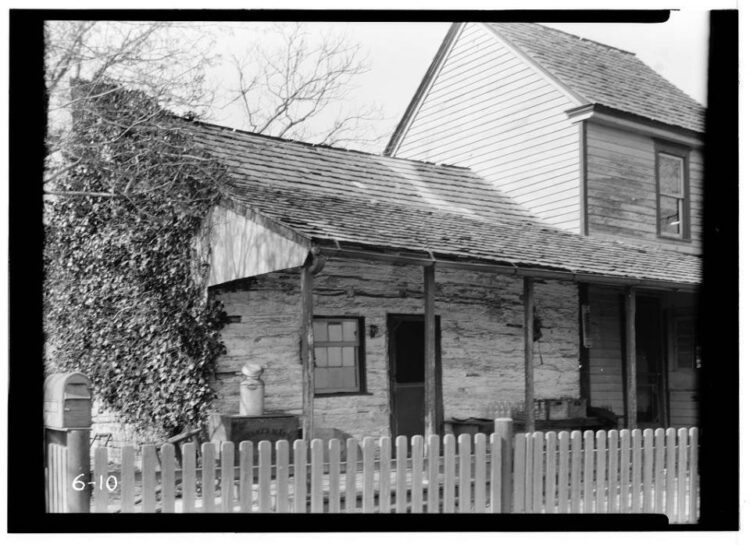New Jersey is home to some of the oldest and most historically significant buildings in the United States.
There are 58 National Historic Landmarks in the Garden State.
The list includes Boxwood Hall in Elizabeth, the Hermitage in Ho-Ho-Kus and Grover Cleveland’s retirement home in Princeton among its many famous old homes. Those structures may be old compared with most of the statewide housing stock, which has an estimated median age of 55, according to U.S. Census Bureau records. Still, they look relatively young compared with the state’s oldest standing buildings.
While the title of oldest home in New Jersey remains in dispute, the historic marker on the C.A. Nothnagle Log House in Greenwich Township says it wins the prize, with a claimed date of construction ranging from 1638 to 1643. Gloucester County’s resource directory alleges the log house is the oldest standing wooden structure in North America.
Story continues below photo gallery.
Sold in 2023 for $262,000, less than 10% of the asking price, the home was once open for tours by its former owner, Doris Rink. Her late husband, Harry, bought the cabin in 1968 from his relatives, stripped the interior of modern wall finishes and restored its white oak exterior, Harry Rink, who died in 2018, told The New York Times in 2000.
The log house features ax-squared logs 4.5 to 5 inches thick that were dovetailed together in a fashion linked to some of the area’s earliest European settlers, says the home’s listing in the federal government’s 1938 Historic American Buildings Survey. In the decades after the first ships arrived from Sweden in 1638, the settlers gave the name New Stockholm to the area along Raccoon Creek in Gloucester County. It was part of the short-lived colony of New Sweden.
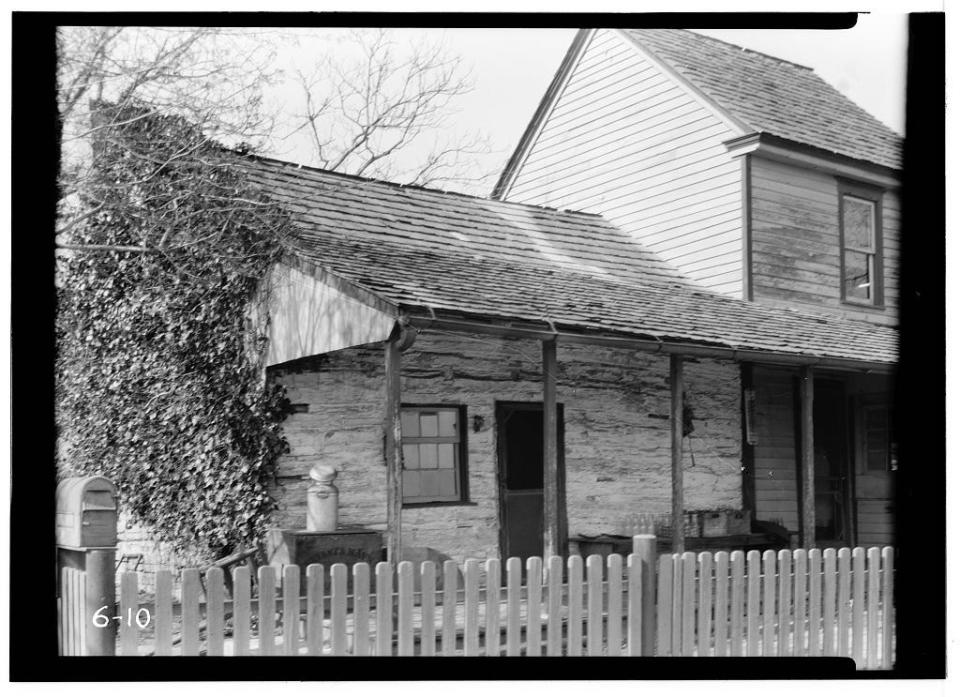

The C.A. Nothnagle Log House in Greenwich Township is alleged to be the oldest home in New Jersey and may date to the first half of the 17th century. It was photographed for the Historic American Buildings Survey by Nathaniel R. Ewan in June 20, 1938.
The oldest part of the log house is roughly 16 by 20 feet and includes a low ceiling and a corner fireplace also constructed in the Nordic tradition, the survey says. Historians have speculated that some of the hardware in the fireplace may have been forged in a Nordic country in the late 16th century, Rink told the Times.
The floor was originally dirt. The hardwood, added later, is still nearly three centuries old, Rink said. According to county records, some historians believe the style of construction was introduced in the Delaware Valley by the Finns rather than the Swedes. Many of the 17th-century settlers were Finnish, though they arrived via Sweden, Amandus Johnson detailed in his 1911 book “The Swedish Settlements on the Delaware, 1638-1664.”
In 1637, Swedish, Dutch and German stockholders created the New Sweden Company to trade for furs and tobacco in North America. The company’s first expedition sailed from Sweden in just two ships, arriving in Delaware Bay in March 1638 and leaving just two dozen men in the Wilmington, Delaware, area, Johnson wrote. Over the next 17 years, 11 more expeditions left Europe for New Sweden.
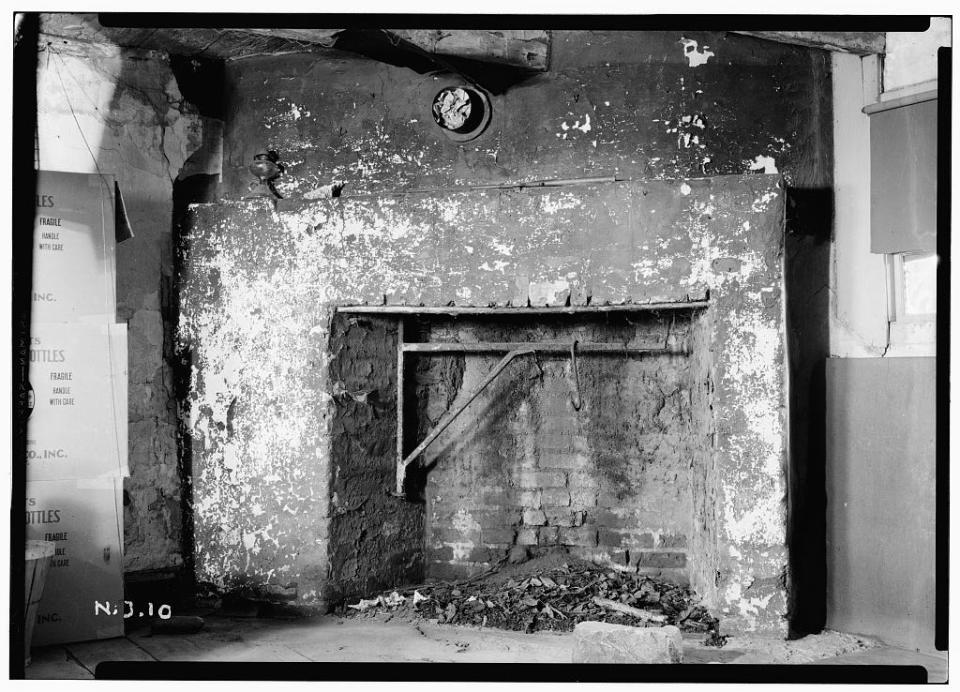

The C.A. Nothnagle Log House in Greenwich Township is alleged to be the oldest home in New Jersey and may date to the first half of the 17th century. It was photographed for the Historic American Buildings Survey by Nathaniel R. Ewan in June 20, 1938.
Many did not survive the trip across the Atlantic, Johnson wrote. Some died soon after. To start 1654, the colony’s population was only about 70, Johnson reported. However, it added roughly 300 that year and eventually consisted of farms and small settlements along both banks of the Delaware River.
The log house’s builder is alleged by county records to be Benjamin Braman, a history relayed by writer Elmer Garfield Van Name in the mid-20th century. For a long time previously, the home was linked to Anthony Nelson, who was born in Sweden about 1652, bought property in the area in his mid-20s and died in his early 40s in Gloucester County, Van Name said.
More: Rare mid-century NJ home designed by Frank Lloyd Wright protégé listed for $1.5 million
State records show there was a Braman, also spelled Bramma or Brayman, who served in the West New Jersey legislature alongside Nelson in 1686. Braman lived and sold land along nearby Clonmell Creek around the turn of the 18th century, records show. However, Braman was born in about 1660 and died in the early 1730s.
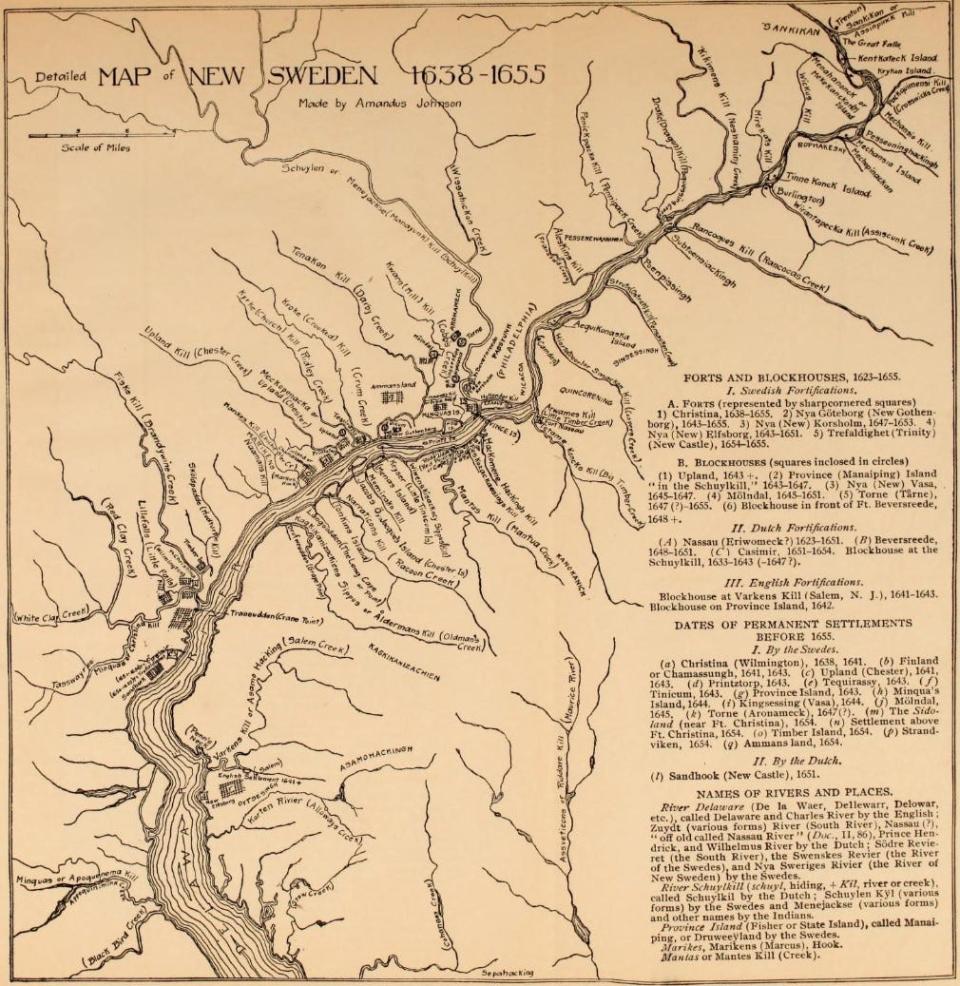

A map of New Sweden from Amandus Johnson and his book “The Swedish Settlements on the Delaware, 1638-1664.”
There is some other doubt surrounding the log house’s early origin, as Swedish Colonial Society records say the first Swedes and Finns to settle in modern-day Gloucester County did not arrive until about 1673. The National Register of Historic Places nomination form that referred to the 1930s buildings survey lists the cabin’s date of construction as circa 1685.
There are buildings some believe to be older than that in New Jersey, including the Swedish Granary now in the yard of the Cumberland County Historical Society headquarters in Greenwich Township. Relocated from a farm in southern Hopewell Township in 1975 and restored in 1976, the log structure is made of roughly hewn Atlantic white cedar linked with notched and crossed corners, society records show. An interior log wall divides the space into two. One has a loft above.
The structure was authenticated as a product of the Swedish colonists, likely built in about 1650, by architects G. Edwin Brumbaugh and Albert F. Ruthrauff in 1973, records show. At that time, American Swedish Historical Museum experts Carl and Alice Lindborg said the grain house was the only surviving example of its kind from the region’s earliest European settlements.
The experts speculated that the building was originally intended for storing threshed grain or animal feed during the days of New Sweden, society records say. However, a dendrochronology report completed in 2016 said samples from the granary’s timbers indicate the “construction of the building in its present configuration took place in or shortly after the calendar year 1783, apparently in 1784 or perhaps as late as 1785.”
As far as old homes go, Sip Manor, formerly of Jersey City, is believed by many to be North Jersey’s senior member and possibly New Jersey’s oldest building. Thought to have been built circa 1665 under Dutch Colonial rule, it was moved to Westfield more than 260 years later by Arthur H. Rule.
The home gets its name from the family that owned it for more than two centuries, the Sip family. Though there are many claims that a member of the Sip family built the house, New Jersey City University records and other sources assert the first Sip to gain ownership was Jan Arianse Sip, between 1697 and 1699.
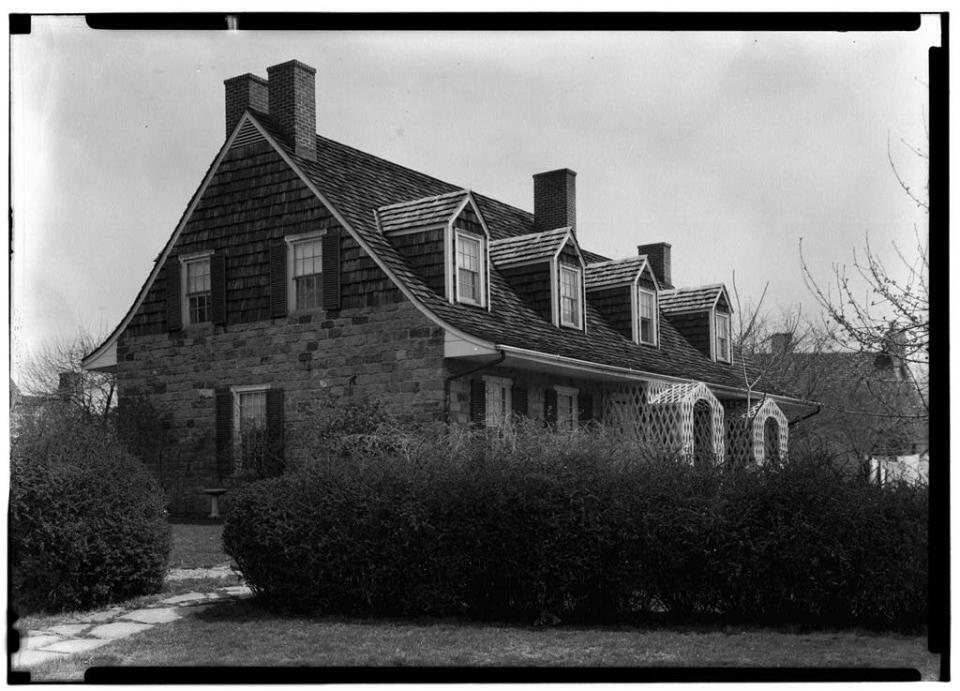

Formerly of Jersey City, Sip Manor was moved to Westfield in the 1920s to preserve it from destruction. It may the be oldest building in New Jersey.
According to those records and several old newspaper reports, the original home site at the corner of Bergen Avenue and Newkirk Street was first granted in 1662 to Nicholas Varleth, or Varlett, and Balthazar Bayard. Most sources, including the 1930s Historic American Buildings Survey, say Sip Manor was originally built between 1664 and 1666 by Varleth, New Netherland’s ambassador to Virginia. Some refer to it as Varleth-Sip Manor.
On the outside, Sip Manor today retains the look of a typical Bergen stone house. Though expanded, the original portion, with its stone first floor, has a steep, overhanging roof and small dormer windows. The upper floor and roof are shingled.
The home for more than two centuries sat at the southeast corner of Newkirk Street and Bergen Avenue in Jersey City. Some dubious histories have claimed New Netherland’s last Dutch governor, Peter Stuyvesant, walked its halls and Maj. Gen. Charles Cornwallis stayed there one night in 1776 as he pursued Gen. George Washington.
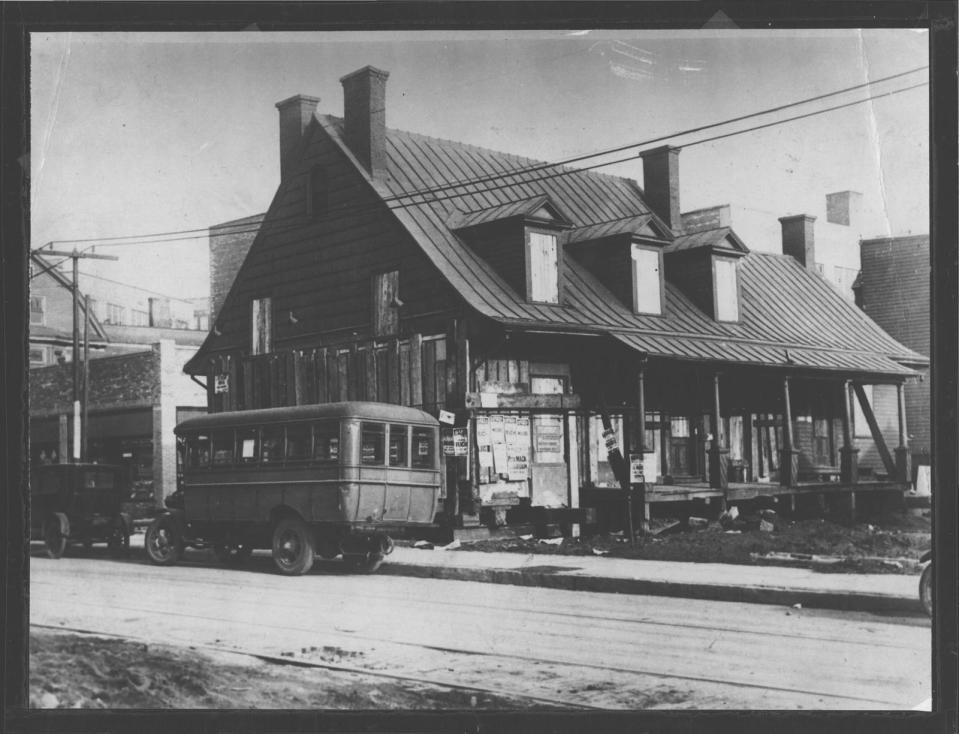

Sip Manor, possibly the oldest home in North Jersey, was once located near Journal Square in Jersey City. It was moved from the pictured location to Westfield’s Cherry Lane in the late 1920s.
Whether it was due to a trumped-up history or not, Arthur H. Rule saved the home from demolition in the 1920s, contemporary newspaper reports say. It was dismantled in stages and reconstructed on Cherry Lane in Westfield from 1926 to 1929 under the guidance of architect Bernard Miller, the Jersey Journal reported. To ensure historical accuracy, Miller meticulously studied photographs, paintings and the original landscaping of the property, the Journal reported.
Not everything made the trip to Westfield. Lost or damaged elements, including parts of the staircase, had to be reproduced, according to records kept by New Jersey City University. The trellis work, windows, chimneys and other parts were either altered or added during the reconstruction. On the other hand, components such as the original doors, casements, sills and window frames were reused, records show. The flooring was reinstalled using wooden pegs instead of nails. As of 2024, the home is well preserved as a private residence.
This article originally appeared on NorthJersey.com: Which is NJ’s oldest home? It’s unclear, but it may be in North Jersey
Source link : http://www.bing.com/news/apiclick.aspx?ref=FexRss&aid=&tid=66bb4822de3c4b91a2aa8027788c8087&url=https%3A%2F%2Fnews.yahoo.com%2Fnews%2Fmay-jerseys-oldest-home-recently-081830881.html&c=15519720202675605395&mkt=en-us
Author :
Publish date : 2024-08-12 17:18:00
Copyright for syndicated content belongs to the linked Source.
